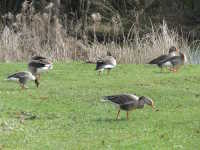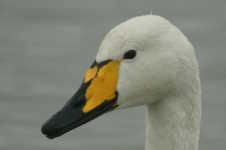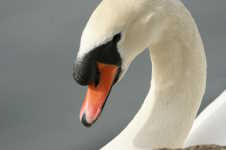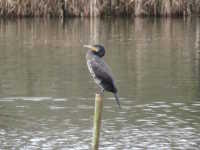Todwick Environment: Wild Birds
Brian Chambers, a member of SK58 Birders, writes articles about wild birds in Todwick.
SK58 Birders is a local birding group that meets monthly in the upper rooms at The Loyal Trooper, South Anston.
We have over 60 members; club nights always include a slide-illustrated talk and a report on local bird sightings. New members are always most welcome.
For further information please contact Brian Chambers, 01909 770816 or visit: www.sk58birders.com
SK58 Birders – July 2023
This time of year is always a quiet birding time with very little song. Blackbirds and Song Thrush are still vocal, the House Sparrows are always chattering away and Skylark are still singing over the fields towards South Anston.
Waders, these are the birds most often seen at the coast, are a bit scarce in the Todwick area. Lately a pair of Oystercatcher have been seen on Tommy Flockton’s Marsh, unmistakeable with their black and white plumage plus a long red bill somewhat akin to a carrot. They have become more common in our area over the last few years with birds seen on the golf course and even a pair breeding at Hodsock, one juvenile bird recorded.
Lapwings are the other Wader seen around here, previously breeding near Tommy Flockton’s Marsh and on Dinnington Community Woodlands but not this year. There are still good numbers on farmland close to Hodsock, about a mile along the track opposite the entrance to Langold Country Park.
Red Kites are regular spotted around the area, including over the fields towards South Anston and over Firbeck and Roche Abbey, this is the best area to make a sighting. A Black Kite was recorded flying East over Stone early June. This is a much rarer species in the UK, it is a summer migrant to Central and Eastern Europe but likely to become more common in the UK as the climate changes. The Red Kite has a distinctly forked red tail, unmistakeable, the Black Kite has just a hint of a fork and much darker.
Hobby, another Raptor, are scarce but regular summer migrants, pairs have bred near to Worksop and in the Firbeck area in recent years. They catch dragonfly early season then young House Martins and Swallows as they emerge. They are very fast and skilled flyers which allows them to catch these species. Sightings have been fairly common over the South Anston area.
Other scarce birds seen locally include a Common Tern near South Anston, they are regular visitors to Langold Lake. A Little Egret on the Todwick fishing ponds, birds are now common on Tommy Flockton’s Marsh and Kiveton Woodlands Park. Raven are often over South Anston, a big black bird, bigger than a Crow, listen for its harsh croaking call. Spotted Flycatcher at Roche Abbey and a Quail, a very small game bird, calling near Long Thwaite Wood.
Finally, a Turtle Dove showed very briefly at Woodsetts towards the end of June. This species is in rapid decline in the UK, probably the most threatened of all bird species in the UK. 10 years ago one or two birds would be recorded in the SK58 area but alas no longer, so it was quiet a surprise.
Brian Chambers
SK58 Birders – May 2023
On my recent local walks I’ve spotted very few birds, at this time of the year bird sightings do tend to decrease as birds nest but numbers do seem very low. I wonder if the bird flu epidemic is one cause as well as the usual threats of habitat loss, crop spraying and urban expansion. Perhaps things will improve once post breeding flocks appear.
Raptors in our area usually meant Sparrowhawks and Kestrels. Kestrel numbers are down but Buzzards are really thriving. It’s not very often that a Buzzard is not seen on a two hour walk, but the same is not so of Kestrels.
Two Raptors which are seen more frequently in the Todwick area are Red Kite and Peregrine Falcon. Both these birds have been sighted a few times lately over the fields between Todwick and South Anston. The Red Kite, similar in size to a Buzzard but with a very obvious forked tail. The Peregrine is larger than either a Sparrowhawk or Kestrel and has noticeably broad inner wing.
Two Common Terns have been recorded over Langold Lake, a regular species at this site. In the past they have been seen over the Axle Lane fishing ponds.
Yellow Wagtail have also returned to the Axle Lane fields between Todwick and South Anston. At least two pairs have been recorded lately, they are ground-nesting bird, in the corn or rape fields which should fledge before harvesting.
Common Warbler migrant species to return to our Todwick area include Willow Warbler, Chiffchaff, Whitethroat and Blackcap. Good sites for these birds are Kiveton Community Woodlands, Chesterfield Canal and Anston Stones Wood.
Less common are Sedge Warbler and Reed Warbler, both of these species are at Kiveton Community Woodlands. Both have a croaking song and nest in the Phragmites Reed beds. They do sing quite often but you may just have to be a tad patient sometimes, the Sedge, with its white eye stripe, does show itself more than the Reed Warbler.
Another species, the Grasshopper Warbler, is much scarcer but one has also been recorded at Kiveton. It’s song is described as reeling, as in a fishing, a sound not dissimilar to a Grasshopper, hence the name.
Finally, a Cetti’s Warbler has also been present at Kiveton for over a month near the green bridge to the north of the fishing pond. This is a bird to hear, usually only short views of the bird flitting through the vegetation are on offer.
So, Todwick area is still a good centre from which to search out the summer visitors.
Brian Chambers
SK58 Birders – February 2023
The regular monthly meetings of SK58 Birders are now held on the last Tuesday of the month (previously Wednesdays) at the Loyal Trooper, South Anston, starting at 7.30 pm. The latest meeting was on 28 February 2023, the speaker was Roy Packer, the subject “Natural History of Lockdown”, a look at how people found nature a help in coping with the restrictions of Covid.
Locally there are plenty of interesting birds to look out for. Pink-footed Geese are still flying over Todwick, high in the sky in their typical V formations, gaining a bit of slip streaming help from their colleagues. Other Geese to fly over in some numbers are the Greylag and Canada species, at a much lower height. The Greylag having grey in their wings, the Canadas some black and white in their head and necks.
Cormorants, all black and with long necks, are also common overhead, particularly over the fishing ponds towards South Anston, here trying to outwit the humans and grab a few fish by diving down into the water.
Another bird associated with water and wet meadows is the Little Egret. These birds, a White Heron, are becoming much more common in our area, good sites to see them are Tommy Flockton’s Marsh, Kiveton Fisheries and a little further afield Langold Lake. One even appeared in a North Anston garden, so anything is a possibility.
Whooper Swans have also been recorded flying over in flocks of a few birds, often a family. These look very similar to our native Mute Swan, the difference being in their beaks which are essentially yellow with a little black. They Winter over here, breeding further north in the Arctic regions.




Tommy Flockton’s Marsh is home to about 50 Wigeon just now, these are Winter visitor wildfowl. The males unmistakeable with a rich brown head and a yellow crown streak, females much duller but the same structure.
Also at this site a Waxwing stayed for a couple of days, perched in the Hawthorne bushes by the Hard Lane entrance. This was one of only 3 birds reported recently in the Sheffield area. Again another Winter visitor, it feeds on the abundant berries on the trees.
Raven, a bird similar to a crow but larger and with a harsh caw call, is being recorded more frequently in our area, so keep a look out or rather an ear out for its harsh caw.
Two other Winter visitors to look out for are Siskin and Lesser Redpoll, these species often feed at the tops of Silver Birch and Alder trees. Kiveton Woodlands are always a likely site to spot these birds.
Enjoy your bird watching and keep a look out for those Winter visitors plus any early Spring arrivals.
Brian Chambers, SK58 Birders member.
Continue to 2022 reports.
